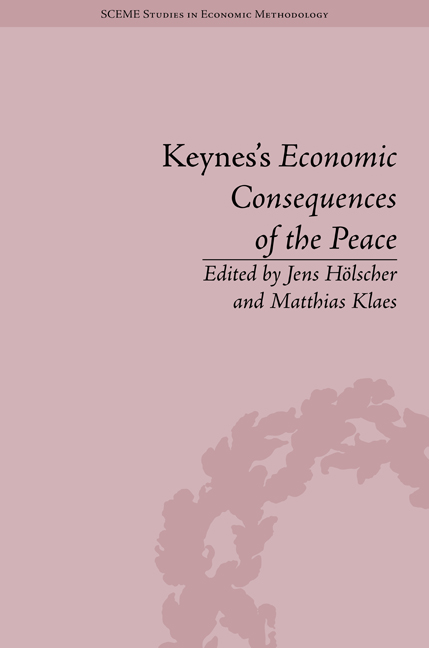Book contents
- Frontmatter
- CONTENTS
- List of Figures
- List of Contributors
- Introduction: Standing the Test of Time: Maynard Keynesas's Economic Consequences of the Peace, a Century On
- Part I The Consequences in their Time
- Part II The Consequences Today
- Part III Keynes: A Play
- 9 The Paris Peace Conference: Act I from Keynes: A Play
- Notes
- Index
9 - The Paris Peace Conference: Act I from Keynes: A Play
from Part III - Keynes: A Play
- Frontmatter
- CONTENTS
- List of Figures
- List of Contributors
- Introduction: Standing the Test of Time: Maynard Keynesas's Economic Consequences of the Peace, a Century On
- Part I The Consequences in their Time
- Part II The Consequences Today
- Part III Keynes: A Play
- 9 The Paris Peace Conference: Act I from Keynes: A Play
- Notes
- Index
Summary
The Economic Consequences of the Peace is full of beautiful prose and deep analytical insights. It's also a magnificent piece of storytelling, which includes many dramatic encounters, a few comical episodes and, of course, a tragic ending. Although Keynes never wrote anything quite like it again, many of his subsequent works also include a good deal of storytelling. This was not an accident. In writing his chronicle of the Paris Peace Conference, Keynes developed many of the skills required to produce a compelling narrative about the human drama. He had to describe the predicaments facing people with diverse interests and points of view and to bring a modicum of order to a very complicated chain of events.
Of course, Keynes did not include storytelling in his later, theoretical works simply because he was a master of the art. In addition, he was sceptical about the explanatory value of what he called ‘symbolic pseudo-mathematical methods’, which assume that a socioeconomic system can be broken down into ‘atomic factors’ that act upon ‘material constant and homogenous through time’. And, he also complained, if the success of this method requires that ‘all the significant factors should be measurable’, then it ‘withdraws from the operation of the method all those economic problems where political, social and psychological factors … may be significant’.
- Type
- Chapter
- Information
- Keynes's Economic Consequences of the PeaceA Reappraisal, pp. 165 - 184Publisher: Pickering & ChattoFirst published in: 2014



